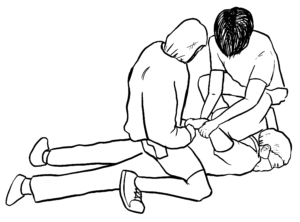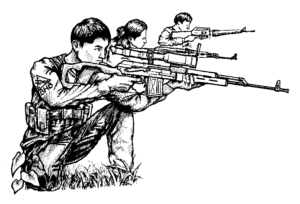Mammoth protests oust Sri Lanka's president

Hundreds of thousands of outraged Sri Lankans stormed and seized President Gotabaya Rajapaksa’s palace in Sri Lanka’s capital Colombo last July 9. The storming of the palace is a high point in the four-month protest actions in the face of intensified economic crisis, hunger and poverty in Sri Lanka.
Rajapaksa was forced to vacate his palace on the same day and officially resigned from office last July 14. Similar to 1986 scenes of how people drove Ferdinand Marcos Sr out of Malacañang, Rajapaksa hurriedly left in a military airplane to Maldives on July 13. He flew to Singapore the following day.
News reports show the ordinary citizens of Sri Lanka celebrating. They entered the extravagant palace, ate in its kitchen, laid on the president’s bed, jumped into the swimming pool and used the expensive facilities.
Rajapaksa’s brother Mahinda was forced to resign as prime minister last May 10. He was replaced by the family’s close ally Ranil Wickremesinghe. The mammoth protest ended the Rajapaksa’s 2-decade rule of Sri Lanka.
The Rajapaksa family are like the Marcoses of the Philippines. They lived in luxury while people suffered from hunger and hardships. They are responsible for the genocidal war during the early 2000s which killed almost 40,000 Tamil minorities.
The Gota Go Home movement which later became Gota Go to Jail became the central call of the protests. The campaign is now transformed to Ranil Go Home after the Rajapaksa’s ally Wickremesinghe was appointed interim president last July 14.
Sri Lanka declared a state of emergency on the same day and threatened to violently disperse the demonstrations which police refused to do. The courts also refused to release arrest warrants for the demonstrators.
What happened in Sri Lanka?
The powerful mass movement took shape primarily due to the failed response of the Rajapaksa government to the economic crisis resulting from massive unpayable external debt and the near-depletion of its foreign exchange reserves. It was exacerbated by large-scale corruption, imposition of destructive economic policies, overconcentration of political power and the government’s failed pandemic response.
Sri Lanka’s $55 billion external debt was 69% of the country’s total gross domestic product. Part of it funded fancy infrastructure projects that were claimed to jump-start the economy.
The country defaulted on its external debt last April making application for new loans difficult. Restrictions under the Covid-19 pandemic caused massive dislocations in tourism, shrinking of textile exports, as well as coconut products and others (which relied mainly on imported materials), and reduction of foreign remittances from migrant workers.
As a result, the country’s foreign exchange reserves, used to pay for imported oil, food, milk and medicines, was almost depleted. This choked local agricultural and industrial production, caused large-scale power outages and the skyrocketing of prices. In addition, the value of the country’s rupee (LKR) against the dollar dropped by 77% from LKR203 to LRK360 to the dollar during the first months of the year.
This resulted in extreme supply shortages of basic commodities. Millions suffered form long queues to buy basic food, kerosene (used for cooking) and gasoline. Inflation rose to 122% in June.
The Communist Party of the Philippines expects this would not be the last mass uprising across the world as peoples confront worsening socioeconomic conditions.



